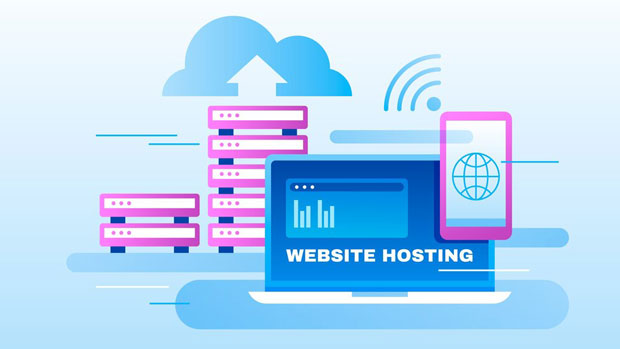When it comes to unblocking websites, proxies are a popular solution, offering users the ability to bypass regional restrictions, protect their online privacy, and maintain anonymity. There are two main types of proxies to consider: free and paid versions. Both offer varying levels of performance, security, and functionality, making it essential to understand the key differences when selecting the right proxy for your needs. This article will delve into the advantages and disadvantages of both options, helping you make an informed decision when choosing the best unblock websites proxy for your browsing needs. Understanding the Importance of Proxies for Unblocking WebsitesProxies serve as intermediaries between your device and the websites you visit. By rerouting your internet traffic through a server located in a different region, proxies allow you to bypass geographical restrictions and access content that might otherwise be unavailable in your location. In addition to unblocking websites, proxies also offer benefits like enhanced security, improved privacy, and the ability to mask your IP address. However, selecting the right proxy can be challenging, especially when choosing between free and paid versions. Free Unblock Websites Proxy: Pros and ConsAdvantages of Free ProxiesOne of the main draws of free proxies is the fact that they don't cost anything, making them an attractive option for budget-conscious users. In addition to being free, many of these proxies are easy to set up and use, which is appealing for users who want a simple solution to unblock websites. These proxies often come in the form of browser extensions or simple software, making them convenient for quick use.Disadvantages of Free ProxiesWhile free proxies may appear to be a great option at first glance, there are several drawbacks to consider. First and foremost, free proxies tend to be slower than paid options, as they usually have a larger number of users sharing limited bandwidth. This can result in long loading times, buffering issues, and an overall frustrating browsing experience. Moreover, free proxies often lack strong security features, which can make them a target for hackers or other malicious actors. Many free proxies also have a tendency to track users' browsing activity, potentially compromising your privacy. Additionally, free proxies are more likely to be blocked by websites and services, which limits their effectiveness in unblocking content.Paid Unblock Websites Proxy: Pros and ConsAdvantages of Paid ProxiesPaid proxies offer several advantages over their free counterparts. The most significant benefit is speed and reliability. Since paid proxies usually have fewer users per server, they tend to offer faster internet speeds, making them a better choice for activities like streaming, gaming, or downloading large files. Additionally, paid proxies are more likely to have dedicated servers, which means they are less likely to experience downtime or slow performance due to high user volume.Another major advantage of paid proxies is security. Many paid services offer advanced encryption methods, ensuring that your data is protected and your identity remains private. Furthermore, paid proxies are less likely to track your online activity, providing a higher level of anonymity. Many providers also offer additional features such as IP rotation, dedicated IP addresses, and better customer support, which can be beneficial for users with specific needs.Disadvantages of Paid ProxiesWhile paid proxies offer superior performance and security, they come at a cost. Subscription fees can vary, depending on the level of service and the number of features you require. For some users, the price may not justify the benefits, especially if their primary goal is simply to unblock a few websites. Additionally, not all paid proxy services are created equal, and some may fail to deliver the performance or security they promise. It’s important to research and read reviews before committing to a paid proxy service to ensure that it meets your needs and expectations.Factors to Consider When Choosing an Unblock Websites ProxyWhen selecting a proxy to unblock websites, several factors should be taken into account to ensure you choose the best option for your specific needs.1. Speed and ReliabilityOne of the most important factors when choosing a proxy is speed. If you need to unblock websites for activities like streaming or gaming, speed is crucial for a seamless experience. Paid proxies generally offer faster speeds due to lower user-to-server ratios, but some high-quality free proxies can also provide acceptable performance for light browsing.2. Security and PrivacyYour privacy and security should be top priorities when using a proxy. Paid proxies typically offer stronger encryption and more robust privacy features compared to free proxies. If anonymity is essential, be sure to choose a paid service that guarantees no logs are kept and offers secure connections.3. CompatibilityMake sure the proxy you choose is compatible with the devices and platforms you use. Some proxies work well with specific operating systems or browsers, while others may support a wider range of platforms. Check the proxy’s documentation to ensure it meets your compatibility requirements.4. Support and FeaturesPaid proxies typically offer better customer support, which can be a lifesaver if you encounter technical issues. Additionally, they often come with additional features like rotating IPs, access to dedicated IP addresses, and enhanced security options, which can be valuable for users with more advanced needs.5. Cost vs. BenefitsConsider the value you’re getting for the price when deciding between free and paid proxies. Free proxies might be sufficient for casual browsing, but if you need a reliable, secure, and fast proxy for unblocking websites consistently, investing in a paid service could offer long-term benefits.Choosing the right unblock websites proxy depends on your specific needs, preferences, and budget. While free proxies may be a good option for occasional use, they come with limitations in terms of speed, security, and reliability. On the other hand, paid proxies provide enhanced performance, better security, and additional features that make them a more suitable choice for users who need a consistent and secure browsing experience. By carefully evaluating the pros and cons of both free and paid proxies, you can make an informed decision that best fits your requirements and ensures smooth access to the websites you want to unblock.
Oct 17, 2025



































































